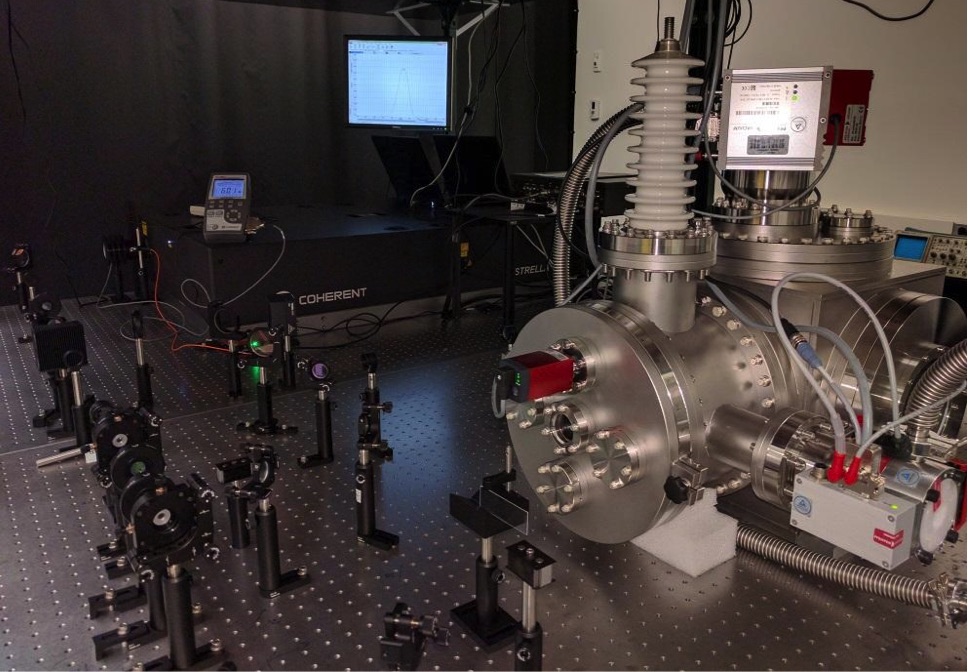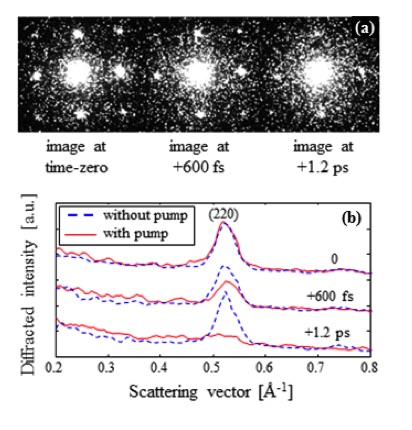In 2014, the Department of Energy laid out five Grand Challenges at the frontier of energy research. The challenges represent major roadblocks to energy research progress that, if conquered, will have transformative impact on the field. Two of these challenges are: (1) “How do remarkable properties of matter emerge from complex correlations of the atomic or electronic constituents and how can we control these properties?” and (2) “How do we characterize and control matter away - especially very far away - from equilibrium?”

Ultrafast Electron Diffraction system being built by Dr. Maher Harb and his research group.
Assistant Professor Maher Harb’s team in the Ultrafast Structural Dynamics Group is addressing these challenges by developing methods for imaging atomic motions on timescales that are fundamental to condensed matter physics and materials science. Harb’s research activities are focused on two fronts: (1) technical development: pushing the frontiers of the Ultrafast Electron Diffraction (UED) technique by building instrumentation capable of sub-Ångstrom spatial resolution and ~100 femtosecond temporal resolution and (2) advancing the science: studying a range of phenomena in laser-excited matter that include investigating the nature of bonding under extreme excitation conditions, understanding the complex electron-lattice correlations in strongly correlated systems, understanding the mechanisms for generation and detection of coherent lattice vibrations, and characterizing these materials properties of nanostructures that are inaccessible using conventional characterization approaches.
The UED technique is an extension of Transmission Electron Microscopy (TEM) that adds the missing time dimension to the already very powerful atomic spatial resolution of electron microscopy. UED is based on the use of ultrafast lasers both to generate the electron pulse that probes, and to supply the laser pulse that excites the structure under investigation. Under this scheme, the electron pulse is inherently synchronized with the laser pulse, allowing for the probing of transient dynamics of the atomic structure by changing the path difference between the two laser arms. This makes the UED technique akin to a fast-motion “molecular camera” in that it produces diffraction images each with a well-defined timestamp corresponding to the arrival time of the electron pulse at the sample relative to the laser pulse.

In an example of studying matter far away from equilibrium, previous research work by Harb, who has a joint appointment in Drexel's Department of Physics, studied the non-thermal melting of silicon. Non-thermal melting is a phenomenon that occurs when a material disorders due to a sudden change in the lattice potential energy surface even though the ions remain cold. Because of the band structure of silicon, it is possible to excite a sufficient number of electrons across the bandgap, thereby weakening the covalently bonded structure and triggering an order-to-disorder phase transition. The top of the image at right shows selected diffraction images capturing the non-thermal melting of silicon. Each image represents a single time point in the series corresponding to the dynamics of the order-to-disorder phase transition. The corresponding line profiles shown in the bottom of the figure at right clearly show the loss of order within a picosecond. This study was the first to directly observe non-thermal melting in silicon and provided unprecedented insights on the physics of the phase transition by ruling out a previously proposed inertial dynamics model. In his next studies focused on dynamics far away from equilibrium, Harb will investigate the structure of strongly excited graphite and the conditions leading to the creation of nanodiamonds. The Holy Grail of this research would be to control the reaction pathways of the graphite-to-diamond phase transition using light.
The current effort of Harb’s team is focusing on building the UED system. The system is expected to come online in the fall of 2016. To put the development effort in perspective, this table-top instrumentation will be able to compete with the time resolved beam lines at third generation synchrotrons and free electron laser facilities. These facilities have development costs in the range of hundreds of millions of dollars. Harb expects the UED system at Drexel to attract strong collaborative work within the Drexel community as well as with neighboring institutions. Even though the interest of Harb’s team is in condensed phase dynamics, resolving molecular motions in biological systems is an interesting possibility. Such studies would address the structure-function relationship, one of the central themes in biology.